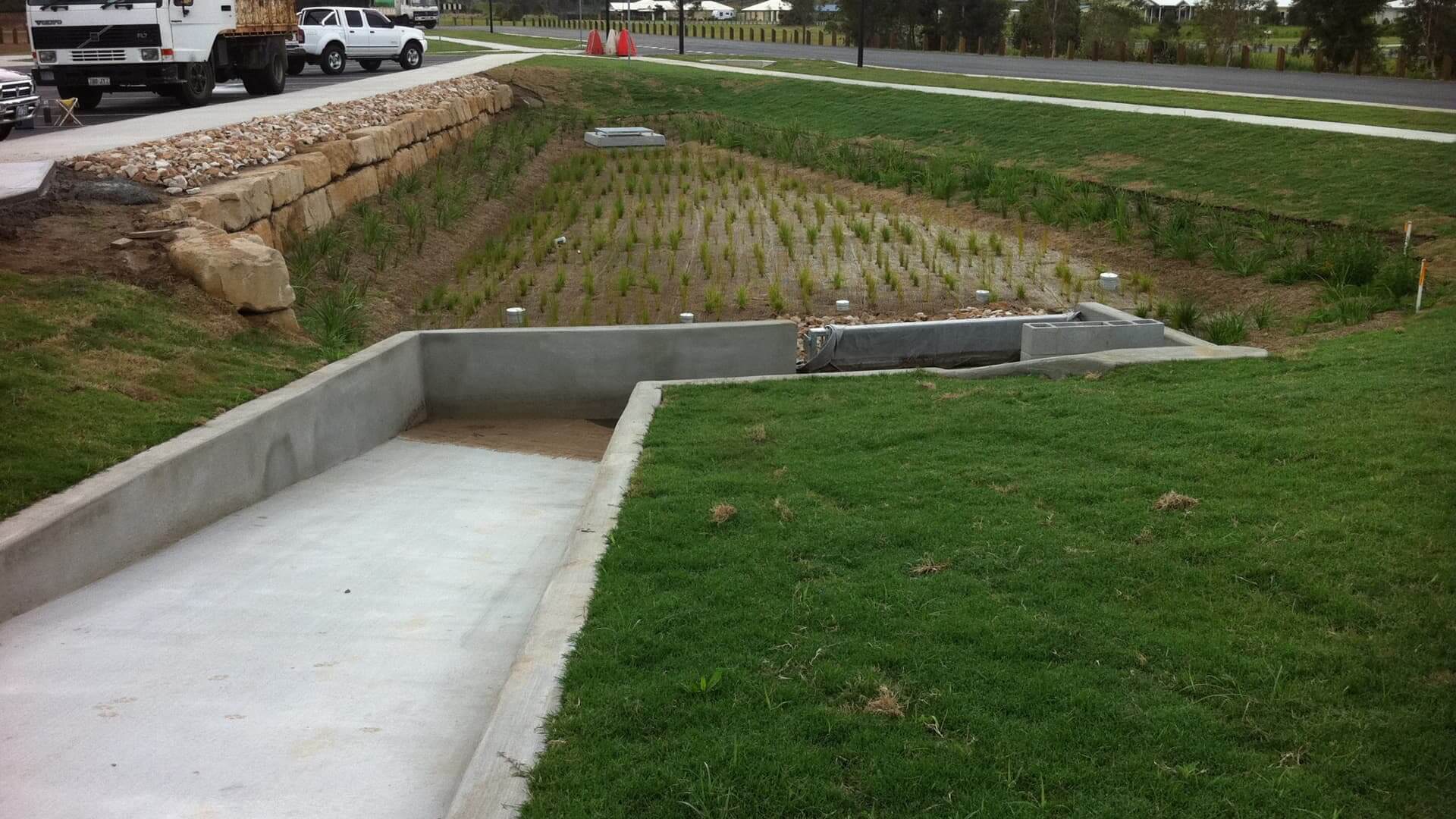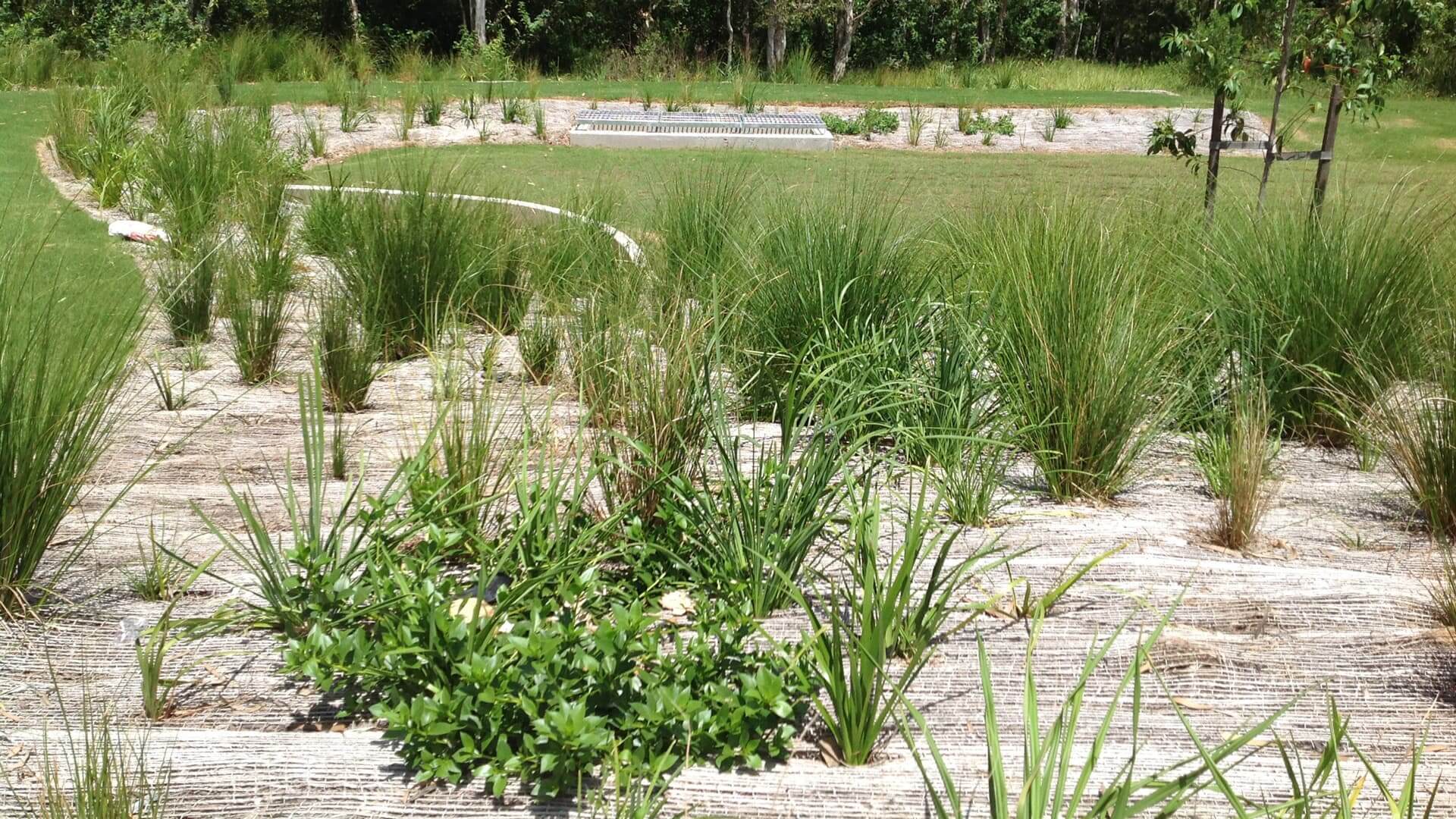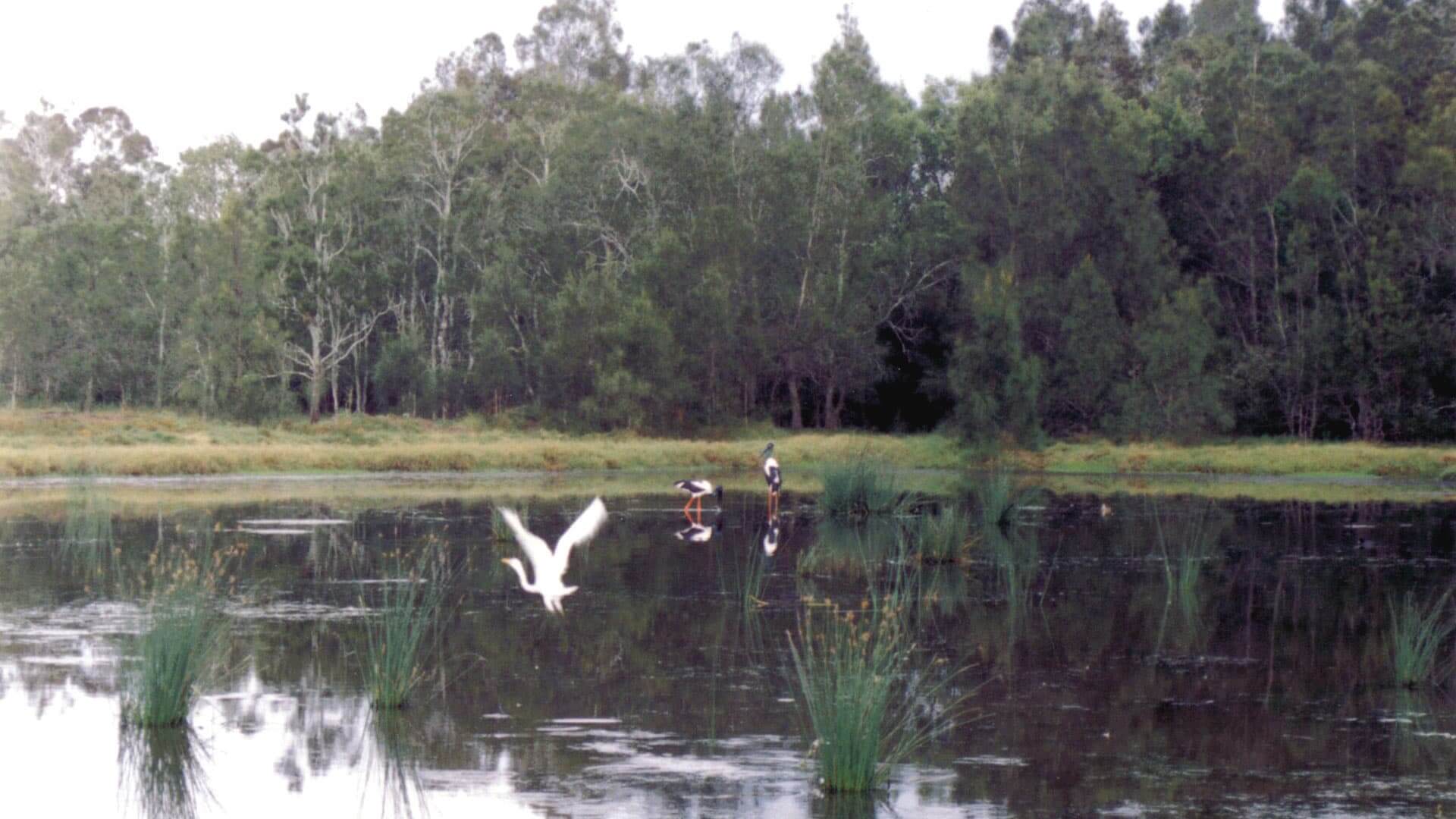The different types of systems and their benefits
About bioretention systems
Bioretention systems are commonly used within Australia, although their use is mandatory within Queensland. They are systems designed to treat and filter large areas of stormwater runoff as part of a treatment train. The filtered stormwater is collected in pipes below the systems and flows through to the stormwater system, natural waterways or detention basins.
The primary function of bioretention systems is to filter out excess pollutants and nutrients. These excess nutrients typically come from fertilisers and primarily consist of nitrogen, phosphorous, and potassium or “NPK”. These nutrients can cause algae bloom if left within the water, and therefore filtering them out through the bio-media and vegetation assists in providing better water quality.
Bioretention systems also assist with water quality control, water conservation and increased amenity. They can provide flood control; however, this is often limited mainly due to their small size. The most common application of bioretention systems is to recover the percolated runoff at the base of the filter media using perforated underdrains for discharge to available waterways. The water could also be directed to storage for potential reuse in the future.
Bioretention systems are well suited to a wide range of soil conditions, including areas affected by soil salinity and saline groundwater. The vegetation in a bioretention system is a vital functional element of the system providing a substrate for biofilm growth within the upper layer of the filter media.
There are three types of bioretention systems: Street tree bioretention pits, Bioretention swales and Bioretention basins or raingardens. Although, the most common systems implemented are the swales and basins and they can be installed at various scales for example as landscape planter boxes, in streetscapes integrated with traffic, and in suburban parks. In larger applications, a swale can be placed upstream of a basin as a pre-treatment measure to reduce the maintenance frequency of the bioretention basin.
Street tree bioretention pits
Street tree bioretention pits are small systems which are incorporated into street tree landscaping. They receive overland water flow from adjacent impermeable street areas. These systems need to allow for sufficient root growth and are designed to have substantial depth between the inlet and the outlet.
Bioretention swales
Bioretention swales are a street scale application of bioretention basins. The swale provides for both stormwater treatment and conveyance functions. The design of a swale provides stormwater pre-treatment to remove coarse and medium sediments at the top while the bioretention system removes finer particulates and dissolved contaminants at the base.
Bioretention basin/raingarden
Bioretention basins or raingardens operate with the same treatment process of a swale, however, they do not include the conveyance function. They are designed to allow water to pool temporarily in the basin before percolating through the vegetation and filter media towards the pipe, pre-treating the stormwater along the way.
Some of the benefits of utilising bioretention systems
- Removal of excess nutrients or NPK’s
- Cost is often lower capital and maintenance costs than alternative proprietary treatment systems
- Reduces impervious areas and disconnects runoff from receiving water bodies to better replicated natural drainage systems.
- Versatility – they work in a variety of climate, soil and groundwater conditions. Simple to integrate into the treatment train
- Performance – bioretention systems provide effective removal of sediment and heavy metals
- Ecosystem health – living plants provide habitat for wildlife
- Aesthetics – they provide green spaces in urbanised environments
- Applicability – they may often require less space than other treatment systems
- Detention – storage and reduction of flash flooding.
There are multiple benefits to including bioretention systems within urban design, and with the different types of applications it is easier to achieve in a variety of environments.
River Sands Bioretention Media has been used in many systems within Australia and is ideal for all types of bioretention systems. We also offer a variety of packing options, including bulk bags, to assist with delivery schedules and project timing. Read more about our bioretention media or get in touch with us.



